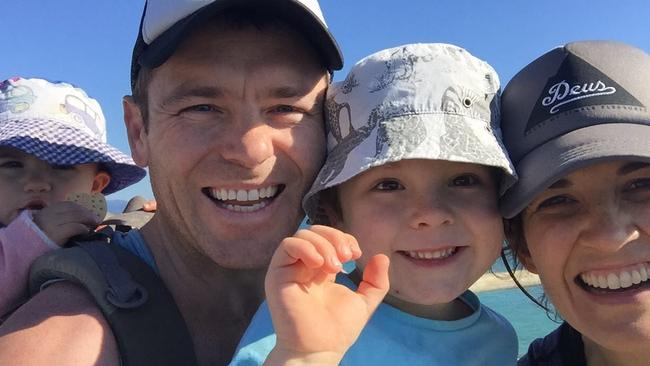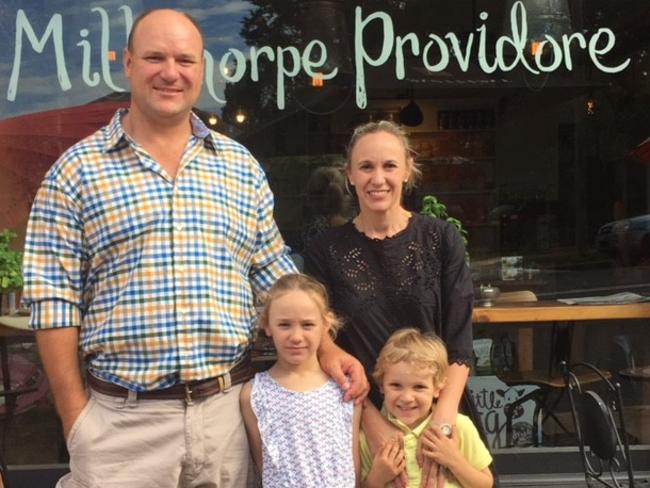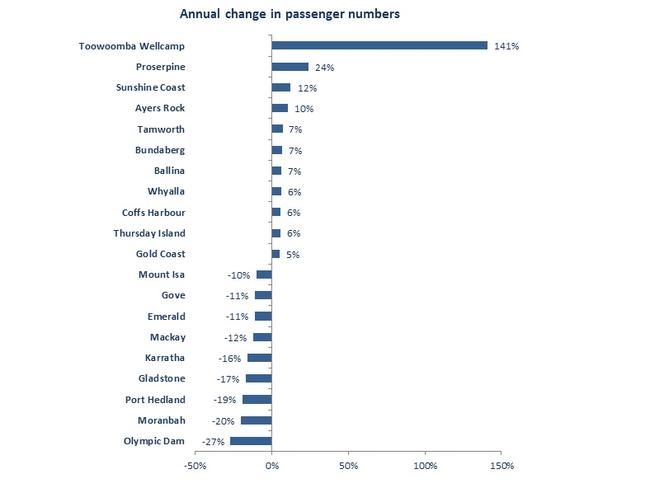Live in Byron, work in Sydney? FIFO office workers living the dream
THIS family has found an affordable way to have the best of both worlds. They’re among a growing number of office workers who fly in, fly out.

At Work
Don't miss out on the headlines from At Work. Followed categories will be added to My News.
IT’S Monday morning at Toowoomba’s Wellcamp airport and the scene is a hive of activity as many of the passengers who call the picturesque Darling Downs home board planes to begin their working week.
These workers are not en route to Western Australia or central Queensland for a mining shift.
They are part of thousands of commuters across Australia living in regional or rural areas commuting to jobs in Sydney and Melbourne.
Meanwhile in Byron Bay, finance professional Mathew Simpson is making his way to Coolangatta airport — which he describes as one of the most efficient in Australia — to begin his working week.
Together with his wife, Tonya, a GP Obstetrician, Simpson says the opportunity and lifestyle in the Byron region is too good to give up for a city life.
“On average, I am away from home no more than two nights a week. Our children enjoy the ‘open space’ upbringing that I enjoyed as a child, and my wife is thriving in her work serving the primary health needs of our local community.”
Simpson works as the national divisional head of a leading investment and asset management firm and stays at a boutique inner city hotel in Sydney during the week, where as a regular visitor he enjoys a discount rate.

“With the support of a progressive employer, modern technology, reliable transport and a loving supportive family, I am able to realise my career ambitions and preserve an enviable standard of living for our young family,” he says.
HOW DOES THE FIFO OPTION STACK UP?
The main costs for ‘out of town’ workers are transport (flights), accommodation in the city and the taxis to and from the airport. The following costs are averages.
• Weekly flight: $300
• Accommodation: $300-$400 weekly rent for an inner city studio apartment
• Taxi to and from the airport $120
When you break it down, it’s actually not that expensive.
Compared with trying to buy a home in Sydney at an average price tag of over a million dollars and mortgage repayments over $4000 per month (after you’ve put down a 20% deposit), and the fly-in fly-out option has appeal.

Leading economist and director of strategy at economic advisory firm AlphaBeta, Dr Andrew Charlton points to the long daily commute in cities such as Sydney encouraging more workers to fly-in-fly-out.
“The eternal challenge in a big city is to combine a good job and an affordable home. In Sydney those two things are increasingly in tension because the good jobs are too far from the affordable housing.
“This means many people are forced to make a choice between living far away from their job and struggling through a horror commute, or living close to work in housing stress. In many parts of Sydney the average commute on public transport is now more than 60 minutes each way,” Charlton said.
THE COUNTRY LIFE IS WORTH THE LONG DRIVE

Engineer, David Llewelyn commutes from Millthorpe outside Orange to Sydney weekly. Millthorpe is in Llewelyn’s view a “scoop of Paddington in regional New South Wales” where the lifestyle benefits and strong community have proved too strong a lure for his young family.
“Housing costs are significantly less in the country and we estimate 85% of our immediate area are young families.”
Llewelyn owns a unit in Sydney which he uses during the week and then rents out on AirBnB on the weekends to negate the costs of not having his residence tenanted.
“The lifestyle factor is a big driver and the community within the town is obviously very attractive for my wife and young children.”
“The drive to Sydney is three hours and depending on work commitments I can manage my schedule to get a bit more time at home,” Llewelyn said.
REGIONAL HUBS GROWING, WHILE PASSENGERS IN MINING AREAS FALL
The growth in some of Australia’s larger regional centres has been nothing short of spectacular, where a good airport or train connection allows workers to live where they want and commute to capital cities to work.

The chair of the Toowoomba and Surat Basin Enterprise, Shane Charles says the new Wellcamp airport has been a catalyst for the region to connect with the wider economy.
“People in industries such as agriculture who grew up in Toowoomba are returning home to live while conducting business in cities such as Sydney and Melbourne,” Charles said.
FIFO CHALLENGES
While connectivity to Australia’s major capital cities is a critical in boosting regional economies, the challenge of time away from families is comparable to their colleagues in the mining industry.
“For a large part of the week you are not there for your kids. My wife and I do discuss whether the trade-off is worth it,” said David Llewelyn.
“These types of arrangements are transitionary. You either find work close to where you live or eventually head back to the city”.
Mathew Simpson agreed, noting, “It can take time and require sacrifices but with a good airport, highway or train connection people living in regional centres can be key contributors to the overall economy.”
Dan Petrie is a freelance data journalist who has worked previously at Bloomberg LP and Macquarie Bank. You can follow him on twitter @dgpetrie
Originally published as Live in Byron, work in Sydney? FIFO office workers living the dream


